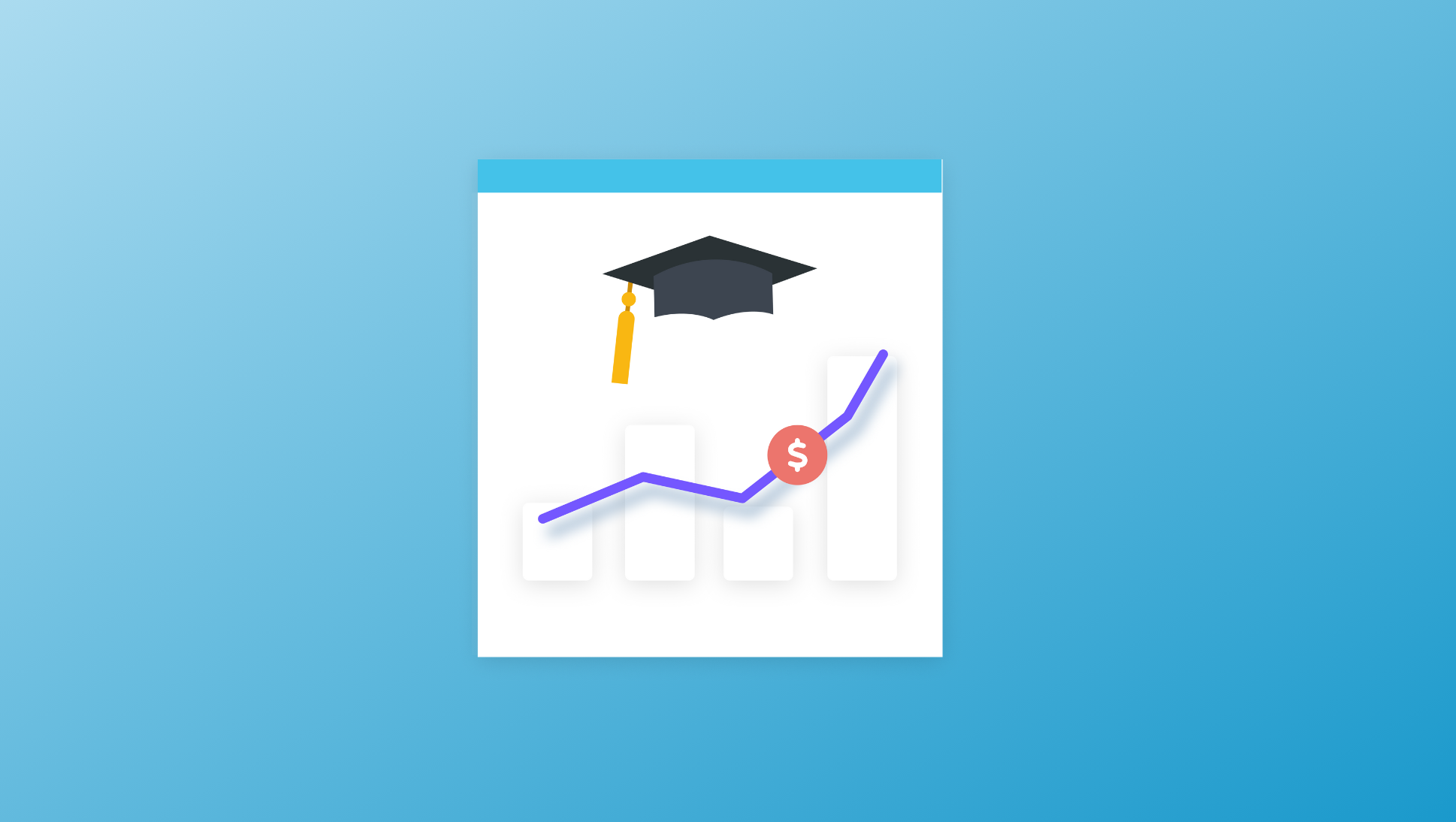4 min read
ACT and SAT Must-Knows for High Schoolers
We recently published a podcast episode on this topic. This blog post provides a recap of what we covered during the episode. Hi! It’s Abby from...
Free for students & their families
Seamlessly integrated, affordable systems for use across your district.
Career Readiness for 6-8 grade, built to guide and track progress in the early years of career exploration.
Scoir + Common App are integrated for the 2025-26 academic year!
Check out content and practical guides to help inform your enrollment strategies and programs.
4 min read
 Erin Barnes
:
December 14, 2023
Erin Barnes
:
December 14, 2023

Now, more than ever, higher education finds itself presented with an opportunity. The opportunity to change, fundamentally, in order to serve more students, provide greater value, and innovate like never before.
|
|
Colleges nationwide are failing to hit their enrollment goals.
Why is this?
Contributing factors are no secret. Let’s address the elephant in the room: economic challenges, demographic challenges, and a skeptical public have collided to create the perfect storm.
Although hypotheses of decline have always swirled around the higher education industry, the magnitude of the most recent discussions is largely unmatched by any other past warning.
However, there's hope. Some college out there are thriving—including small private universities that are persevering against all odds. Let's explore what's causing these enrollment challenges, then explore reframing these challenges into opportunities.
The Great Recession of 2008 reduced state funding for public colleges and universities, which enrolled two-thirds of all college students at the time. This had a two-fold effect on student outcomes.
First, public colleges passed more costs on to students. The average cost of attendance (i.e. the amount students actually pay for tuition, fees, room and board) has increased by as much as 169%. Increased cost of attendance prohibits college access for many students from low-income and middle-income households.
Second, in an effort to reduce their own costs, many colleges have increased their reliance on part-time contingent faculty (i.e. adjunct professors) and are offering fewer courses. One report recently found that 36% of entry-level courses at four-year public institutions are overloaded, creating bottlenecks that hindered students from graduating on time. Barely 60% of students who earn a degree from a public university do so in 4 years, compared to 82% from private non-profit colleges.
The net result of these economic challenges this: not only is college more expensive, but it also takes longer to earn a degree.
Then, March 2020 came. Colleges and universities saw a surge in relief funding, as did students and their families. Now, the funding is running out, and society is running into the same issues.
Nathan D. Grawe is hardly the first to suggest a bleak outlook for higher education institutions when it comes to enrolling 18-year-old college-bound students. However, his book Demographics and the Demand for Higher Education, has certainly caught the attention of many in the higher education space.
Grawe, a professor of social sciences at Carleton College, tracked birth rates and found that the economic downturn of 2008 led to many people delaying the start of families. This "birth dearth,” as Grawe terms it, is predicted to trigger a 15% drop in the number of new high-school graduates within 5 years, beginning in 2026. Declines in the Northeast and Midwest regions, which are traditional higher education strongholds, are already underway.
Not to mention a new huge issue facing higher education: the Search Cliff and the recent Supreme Court decision. Colleges are now forced to pivot their enrollment marketing strategies.
It’s hardly a secret that distrust of higher education institutions is brewing among the general public. In fact, we can point to a 2018 survey conducted by the Pew Research Center to understand that 61% of Americans believe that higher education is going in the wrong direction. Of that number, 84% cite high tuition as the main reason for their belief; 65% cite not getting the skills needed to succeed in the workplace as the main reason for their belief.
Things aren't looking up in this regard. In July 2023, Gallup found that only 36% have "'a great deal' or 'quite a lot' of confidence in higher education."
This is striking considering that roughly 35% of all job openings require at least a bachelor's degree and fully two-thirds require at least some college education.
So, what is the big picture?
Value.
Students and their families want more assurance that the money they are investing in higher education will directly connect them to higher-earning career opportunities, and rightfully so. With escalating college costs and diminishing payoff in terms of career opportunities (with the hope of an adequate salary), college education may not be worth the huge investment to today’s average student.
The above challenges that have quickly come together to be anxiously referred to as "the enrollment crisis" by admission leaders could, instead, be viewed as an opportunity by those very same leaders. A wake-up call. At this moment, universities could be using these challenges to guide their strategic-planning process, synthesizing their institutional priorities with the priorities of those they serve, and aiming to build consensus about their strengths.
What universities shouldn’t do at this moment is to think: “The problem must be that not enough people know about what we’re doing. Let’s spend more money on marketing efforts.” Doing this would show a complete lack of understanding. Institutions need to do a good job telling people about what they have to offer, but first they must ensure they're offering something students want. The focus needs to switch from salesmanship to the value of what they are selling.
The larger concern of today’s student market is value. So, how can the value of your university be elevated? We must think in terms of the real, hard value of higher education, not the intrinsic value. Today’s students are pragmatic. They view college as a transaction, not simply a time of transformation and personal growth.
While demographics are beyond control, economic challenges and a skeptical public are problems that can be addressed using innovative thinking and fundamental change. Innovation within the higher education space is often feared, but avoiding discomfort and maintaining self-interests can no longer come before the common good of institutions and society. Many believe that higher education is reaching an inflection point: colleges can either adapt or face the inevitable decision to close or merge. Richard Vedder, an economist who studies higher education, wrote:
“To me the issue is not, ‘will colleges be forced to close?’ but rather how many will close and over what time period. Will it be 500? 2000? Will it largely happen in the next five years, or 10 years or more? “
The data outlined in this article may hit you like a ton of bricks, and it should. Higher education, as an industry, is on a collision course with reality. More colleges will likely close, and no, your college is not immune.
So, what are some examples of strategies that universities are using to seize the opportunity?
There is no single approach that will fix any university’s enrollment problem. Many colleges must simultaneously employ several strategies with little guarantee that their efforts will produce desired results. Those who act fast and take risks can help to rewrite the business model of higher education before the market rewrites it for them.
It’s time that the common good of better serving students with a valuable education is prioritized!
This article was originally published on March 12, 2020. It was updated on December 14, 2023 for accuracy and comprehensiveness.


4 min read
We recently published a podcast episode on this topic. This blog post provides a recap of what we covered during the episode. Hi! It’s Abby from...

6 min read
Gaining admission to the college(s) of your choice might weigh heavily on your mind at the moment. The odds are that the prospect of affording...

8 min read
The Free Application for Federal Student Aid (FAFSA), managed by the Department of Education, is the gateway to federal and state financial aid for...